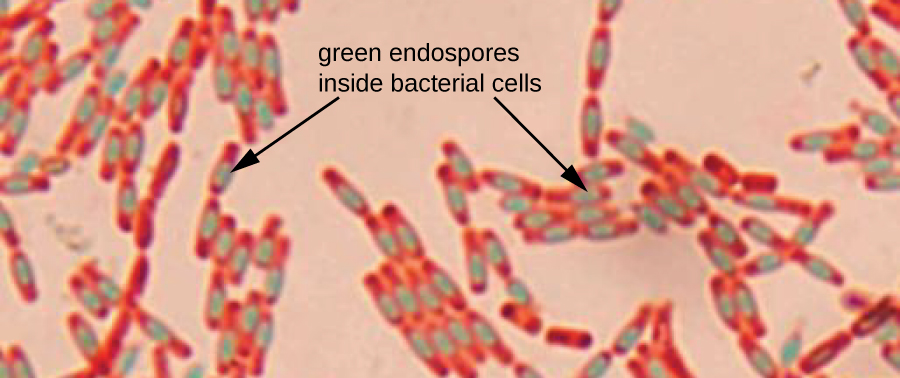3.4: Bacterial sporulation
- Page ID
- 131122
Spores are durable structures that are formed within some Bacteria (endospores; Fig. \(3.4\)) or on the bacterial surface (exospores). Spore contents include the bacterium’s DNA and ribosomes, key ingredients for making a new cell. Bacterial spores are protective spores rather than reproductive spores, which are formed by fungi. Protective spores provide a strategy for surviving harsh conditions. Spores can survive extreme heat, desiccation, UV exposure, and other environmental stressors (Beskrovnaya et al., 2021). In fact, spores have been recognized as the hardiest form of life on Earth (Nicholson et al., 2000). Once favorable conditions return, the spore can then transform back into a cell.
Sporulation, the process of forming spores, has been most thoroughly studied in members of the phyla Firmicutes, who make endospores, and Actinobacteria, who make exospores, but other groups are also capable of sporulation (Beskrovnaya et al., 2021). Generally, the main driver of spore formation appears to be depletion of nutrients (Higgins and Dworkin, 2012; McCormick and Flärdh, 2012), but drivers vary with the needs of individual species (Beskrovnaya et al., 2021). For example, Mearls et al. (2012) found that a strain of Clostridium thermocellum formed spores when exposed to oxygen \(\left(\mathrm{O}_2\right)\). The bacterium is an anaerobe, meaning it exists in environments with little oxygen. As we will discuss in Chapter 6, oxygen is toxic to some anaerobic microorganisms and thus, sporulation provides C. thermocellum with a strategy to survive oxygen stress.

https://commons.wikimedia.org/wiki/File:OSC_Microbio_02_04_Endospores.jpg


